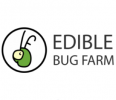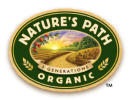News: Heritage Foods, Preserving Diversity
Heritage Foods. Preserving Diversity
Exploring Canada’s ‘Ark of Taste’
One of the most underreported threats to our local, national and global food systems, is the loss of agricultural diversity.
Entering into any Canadian grocery, you’ll likely come across the same variety of tomato, the same wheat used in your loaf of bread, the same breed of cow that provided you with dairy, and the same breed of hen that laid your egg.
As our desire to access cheap and convenient foods has strengthened in recent decades, industrial interests have taken advantage of this laissez-faire approach and streamlined the food supply. At no time was maintaining diversity and flavour ever a concern.
What a shame to deprive our taste buds of their true potential!
In the case of livestock, 90% of dairy products produced in Canada come from one breed. Most of Canada’s turkeys have been bred to produce so much meat, that many are prone to heart attacks due to the extra weight they now carry around. The predominant variety of chicken now laying eggs for Canadians has lost most of its mothering instincts. This poses quite the concern given the industrial egg sector supplies 98% of Canada’s eggs.
We’re placing ourselves into a dangerous position and setting ourselves up for quite a lot of work should we ever choose to reclaim this lost diversity and move towards more non-industrial systems.
The Slow Food organization based in Italy opposes the homogenizing of food and is instead in favour of preserving diversity. One branch of the group calls itself the Slow Food Foundation for Biodiversity, and in the past few years has been building up the “Ark of Taste”; a project that aims to rediscover, catalog, describe and publicize forgotten flavours.
Dozens of countries now maintain their own Ark and Canada maintains seven foods of heritage appeal.
The first is the Canadienne Cow. Only 1,000 are left in the country. The breed is smaller than most dairy cows, and was developed in what is now Quebec between the 16th and 17th centuries. The Canadienne was ideal for the Canadian climate and did not require imported feed or intensive management.
Herring Spawn on Kelp; a staple food of British Columbia’s First Nations, is a broad leaf sea kelp covered with naturally spawned herring eggs. Unfortunately, the majority of the harvest is exported to Japan. This is similar to the Pine mushroom (Matsutake); another delicacy growing in the mountains of B.C., yet the Japanese are willing to pay more for it than British Columbians.
Another native breed in Quebec is the Chantecler Chicken. Their global population is estimated between 1750 and 2250. The Canadian population is estimated at about 1000-1500.
The Montreal Melon, once known in Canada as the Queen of Melons for its huge size, was not an ideal variety for an industrial food system, and it’s presence on grocery store shelves has disappeared. It first appeared in Canada in the 17th century and a group in Montreal is now trying to resurrect the variety.
With thousands of apple varieties still preserved in Canada, the Nova Scotia Gravenstein is the only apple in the Ark. Gravenstein is a town in Germany where the apple is said to have originated, but it wasn’t brought to Canada until around 1800. It’s suggested that the apple’s popularity is thanks to its multi-purpose qualities.
The Great Plains Bison is the largest terrestrial mammal in North America. The population was decimated following the arrival of Europeans, and even rehabilitation efforts have altered the animal’s genetics for the worse. There are, however, some farmers in Canada now raising the animals in environments that closely resemble their natural habitat.
And the last one currently residing in the ark is Red Fife Wheat; known as the predecessor of most of the varieties of wheat found across the country today. Brought to Canada from Scotland in the mid 19th century, this variety of Ukrainian origin fed Canadians between 1860-1900. Today, Red Fife is undergoing a resurgence across the country because of its unique flavour and adaptability. In the Creston Valley ofBritish Columbia, four farmers tested out the variety this year, and residents of the area will be feasting on Red Fife bread soon enough.
When exploring these unknown yet important varieties of foods, it’s easy to recognize how detached our approach to agriculture has been over the past half century. It seems that along the way, we forgot how diversity within our agricultural practices is just as important as diversity found within the wild.
So go out and grow a Montreal Melon or ask a farmer to grow Red Fife Wheat! It’s easier than it sounds.
In next week’s column, stay posted for an update on Canada’s first community supported agriculture (CSA) project for grain. As a member myself, I’ll soon be exposing my taste buds to Red Fife Wheat for the first time!
Deconstructing Dinner is heard on radio stations across Canada and is available as a Podcast. For more information on Heritage Foods, visit (www.cjly.net/deconstructingdinner/heritagefoods.htm).
|
“The Montreal Melon, once known in Canada as the Queen of Melons for its huge size, was not an ideal variety for an industrial food system, and it’s presence on grocery store shelves all but disappeared.”
|
Category:


































